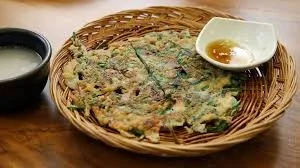Happy Lunar New
As a Korean American (Half-Korean, Half-White), I’ve always cherished the cultural traditions that connect me to my heritage. This year, I’m making it a personal mission to deepen that connection, starting with one of the most significant celebrations in Korean culture: the Lunar New Year, or Seollal (설라르).
What is the Lunar New Year?
The Lunar New Year is a festival that marks the beginning of the new year according to the lunar calendar. Unlike the Gregorian calendar, which most people use, the lunar calendar is based on the moon’s cycles. This year, the Lunar New Year falls on Wednesday, January 29, 2025.
In many East Asian cultures, including Korea, Lunar New Year isn’t just about starting a new year—it’s about honoring family, reflecting on the past, and welcoming new beginnings with hope and positivity.
How is Seollal Celebrated in Korea?
Seollal is traditionally a three-day celebration in Korea. Families gather from all over to celebrate together. Some of the key elements of Seollal include:
1. Wearing Hanbok (한복)
Hanbok, traditional Korean attire, is often worn during Seollal to honor tradition. Its vibrant colors and intricate designs symbolize good fortune and prosperity for the new year.
When I was a child, my family observed Seollal in our way. Being American, we typically attend church on Sunday, but things felt different and special during the Lunar New Year. I remember wearing a hanbok, participating in Charye, and receiving money from my elders. My favorite part was always eating tteokguk and jeon. These traditions often embarrassed me, feeling like they made me stand out too much. However, as I got older, I began to wish I had taken more time to appreciate these beautiful moments.
2. Rituals and Ancestral Ceremonies
A significant part of Seollal is performing ancestral rites, known as Charye (차려). Families set up a table filled with various traditional foods as an offering to their ancestors. This ritual expresses gratitude and seeks blessings for the upcoming year.
3. Sebae (세발)
Sebae is a significant ritual where younger family members bow to their elders and wish them good fortune for the year ahead. In return, they often receive words of wisdom and a small gift, usually money in a decorative pouch called bokjumeoni (복줄머니).When bowing, you can say 새해 복 많이 받으세요 (saehae bok mani badeuseyo), which means “Have lots of luck in the new year.”
Photo: USAG- Humphreys
4. Traditional Foods
Food plays a central role in Seollal. One of the most iconic dishes is tteokguk (떡국), a savory rice cake soup. Eating tteokguk symbolizes growing a year older and is believed to bring good luck for the new year. Other popular dishes include jeon (전) (savory pancakes) and various side dishes.
tteokguk (떡국)
jeon (전)
5. Games and Activities
After the formal rituals, families often spend time playing traditional games. One popular game is Yutnori (유통게임), a board game played with four wooden sticks; you can find It on Amazon. Kite flying and jegichagi (a game similar to hacky sack) are also common.
The Deeper Meaning Behind Lunar New Year
Beyond the colorful celebrations, the Lunar New Year is about reconnecting with loved ones, honoring the past, and setting intentions for the future. It’s a time of gratitude, reflection, and renewal. As I grow more curious about my Korean heritage, Seollal offers an opportunity to learn about my cultural roots and share those traditions with others.
How I Plan to Celebrate
This year, I plan to celebrate Lunar New Year. I might ask my mom for tips on how to make it even more special. I’ll start by cooking some traditional Korean dishes, including tteokguk, and if that doesn’t work, I might buy them from H-Mart or O-mart. I also want to take a moment to reflect on my goals for the year ahead and express gratitude for the people in my life.
I’m also looking forward to learning more about the customs and history behind Seollal. Whether through conversations with family, reading, or simply immersing myself in the traditions, I want to make this celebration a meaningful experience.
Lunar New Year is more than just a holiday. It reminds us of the importance of family, tradition, and new beginnings. As I embark on this journey to reconnect with my Korean roots, I aim to inspire others to explore and embrace their heritage.
If you’ve celebrated Lunar New Year or have any tips on how to make it unique, I’d love to hear from you! Here’s to a year of growth, gratitude, and good fortune.
Happy New Year! 새해 복 많이 받으세요!
(Sae-hae bok mahn-hee ba-deu-se-yo)
Sae-hae (새해) means “New Year.”
Bok (복) translates to “blessings” or “good fortune.”
Mahn-hee (많이) means “a lot” or “many.”
Ba-deu-se-yo (받으세요) is a polite way to say “receive.”
Taste. Explore. Inspire.


